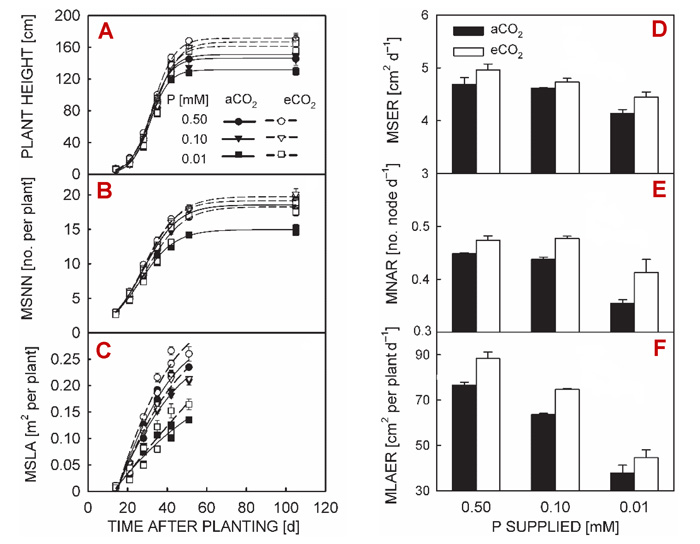| Tweet | Follow @co2science |
Paper Reviewed
Singh, S.K., Reddy, V.R., Fleisher, D.H. and Timlin, D.J. 2017. Relationship between photosynthetic pigments and chlorophyll fluorescence in soybean under varying phosphorus nutrition at ambient and elevated CO2. Photosynthetica 55: 421-433.
Under current ambient conditions, plant growth and development are typically carbon-limited, which is why plants generally exhibit increased growth and biomass production in response to atmospheric CO2 enrichment. Next to carbon, nitrogen is usually the second most limiting nutrient to plant growth, followed by phosphorus (P). Thus, although it is a less significant component of plant tissues than carbon and nitrogen, phosphorus is still required for successful life-cycle completion in many plant species; and, therefore, it is prudent to investigate aspects of plant phosphorus acquisition and biomass production in response to atmospheric CO2 enrichment when phosphorus concentrations in soils are less than optimal.
Such was the design of a recent paper by Singh et al. (2017), who grew soybean (Glycine max, cv. Spencer) plants for a period of 55 days in controlled environment chambers under two atmospheric CO2 concentrations (400 and 800 ppm) and three concentrations of phosphate (0.5, 0.1 and 0.01 mM P). Throughout the duration of their experiment the authors measured a number of plant growth and development traits.
And what did those measurements reveal?
In summarizing their findings, Singh et al. report that "phosphorus deficiency significantly decreased soybean vegetative growth and developmental rates of main-stem elongation, node addition and leaf area expansion, whereas elevated CO2 stimulated [them]." Indeed, as shown in the figure below, elevated CO2 clearly helped to ameliorate the negative impacts of phosphorus deficiency on this important cereal crop.

Figure 1. Response of (A) plant height, (B) main-stem node number (MSNN), and (C) main-stem leaf area (MSLA), (D) mainstem elongation rate (MSER), (E) mainstem node addition rate (MNAR) and (F) main-stem leaf area expansion rate (MLAER) of soybean to three phosphorus (P) treatments grown at either ambient (aCO2, 400 ppm) or elevated (eCO2, 800 ppm) CO2 concentration. Source: Singh et al. (2017).




